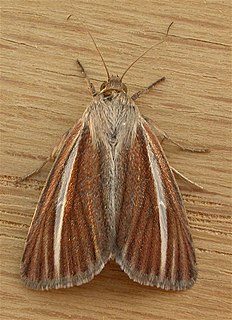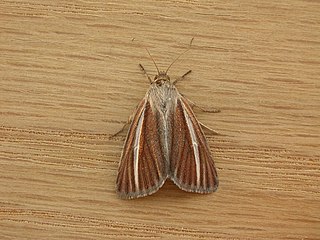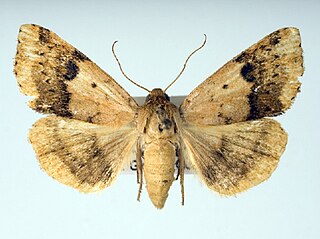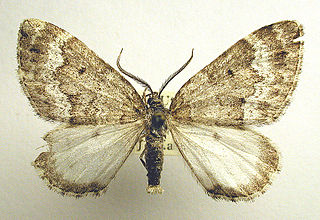
Heliocheilus cramboides is a moth of the family Noctuidae. It is found in Victoria, Western Australia, the Australian Capital Territory, New South Wales, the Northern Territory, Queensland and South Australia.

Heliocheilus is a genus of moths of the family Noctuidae. Former synonyms include Canthylidia.

Heliocheilus cistella is a moth in the family Noctuidae. It is found in the Australian states of Northern Territories, Queensland and Western Australia.

Heliocheilus mesoleuca is a moth in the family Noctuidae first described by Oswald Bertram Lower in 1902. It is found in Australia in New South Wales, the Northern Territory, Queensland and South Australia.

Heliocheilus julia is a North American moth in the family Noctuidae. Heliocheilus julia is attracted to lights. Its life history and host plants are unknown.

Heliocheilus confertissima is a species of moth of the family Noctuidae. It is found from Northern Africa to the Middle East, including Saudi Arabia, Iran and Oman.

The paradoxical grass moth is a species of moth of the family Noctuidae. It is found from Ontario and British Columbia, south to at least California, Arizona, Texas and Florida.
Heliocheilus albivenata is a moth in the family Noctuidae. It is endemic to Western Australia.
Heliocheilus ferruginosa is a moth in the family Noctuidae. It is endemic to the Northern Territory, Queensland and Western Australia.
Heliocheilus fumata is a moth in the family Noctuidae. It is endemic to Queensland.
Heliocheilus thelycritus is a moth in the family Noctuidae. It is endemic to the Northern Territory, Queensland and Western Australia.
Heliocheilus rhodopolia is a moth in the family Noctuidae. It is endemic to New South Wales, the Northern Territory, Queensland and Western Australia.
Heliocheilus neurota is a moth in the family Noctuidae. It is endemic to New South Wales, the Northern Territory, Queensland and Western Australia.
Heliocheilus melibaphes is a moth in the family Noctuidae. It is endemic to the Northern Territory, Queensland and Western Australia.

Heliocheilus lupatus, the purple topper, lupatus straw moth or spotted straw moth, is a moth in the family Noctuidae. The species was first described by Augustus Radcliffe Grote in 1875. It is found in the United States from Kentucky and central Connecticut south to Florida and Texas.

Zythos turbata is a moth of the family Geometridae first described by Francis Walker in 1862. It is found in southern Myanmar and on Borneo, Sumatra, Java, Peninsular Malaysia and the Philippines.

Colostygia turbata is a moth of the family Geometridae. It is found from the mountains of Europe to the Altai, as well as the Kamchatka Peninsula and Canada.
Heliocheilus albipunctella, the millet head miner moth, is a moth in the family Noctuidae. It is found in the Sahelian region of West Africa.
Heliocheilus thomalae is a moth in the family Noctuidae. It is found in Tanzania.

Elophila turbata is a moth in the family Crambidae found in Africa and Asia. It was first described by the English entomologist Arthur Gardiner Butler in 1881 from a specimen found in Yokohama, Japan.
This page is based on this
Wikipedia article Text is available under the
CC BY-SA 4.0 license; additional terms may apply.
Images, videos and audio are available under their respective licenses.









